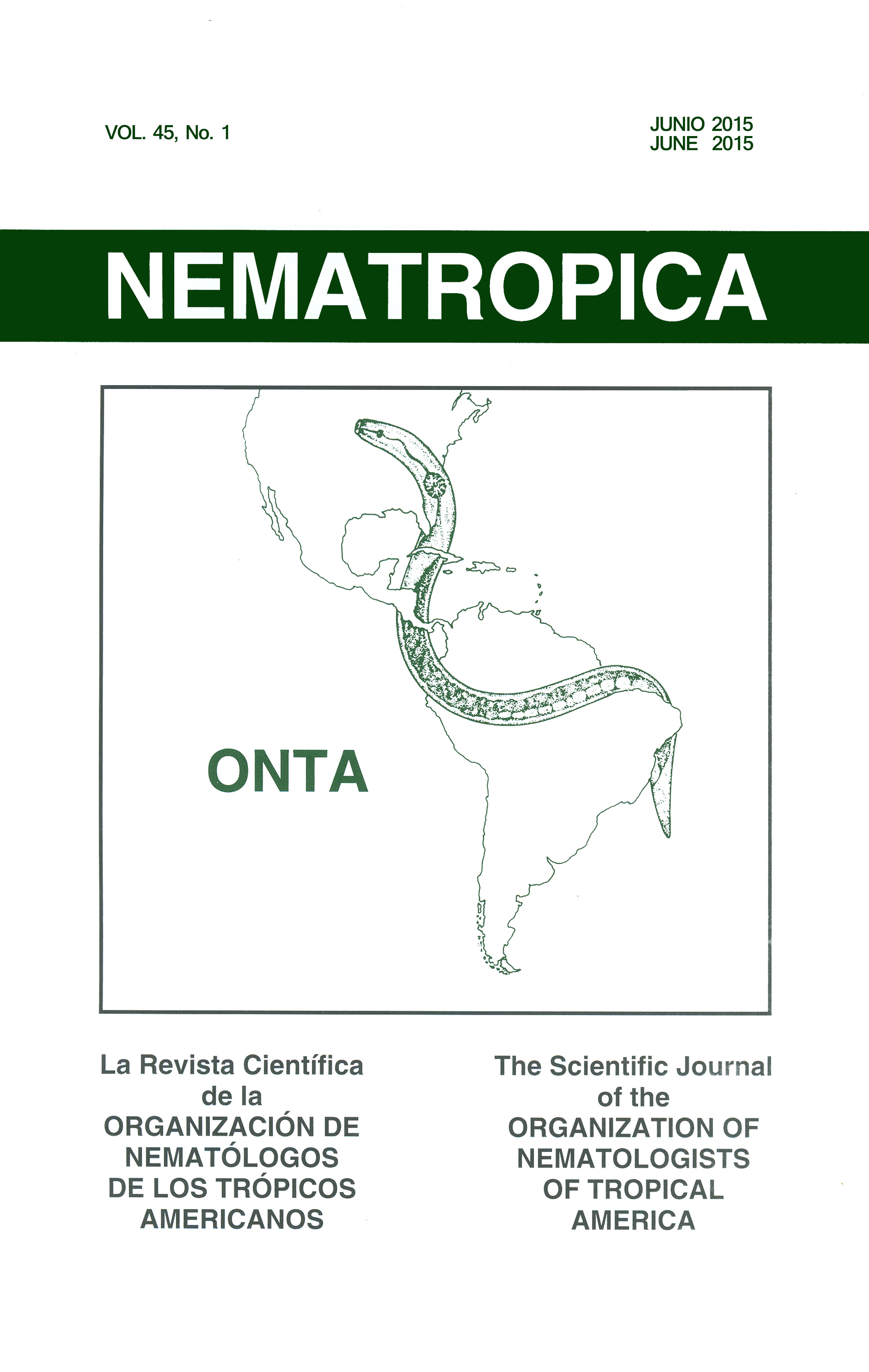OCCURRENCE AND PATHOGENICITY OF PLANT-PARASITIC NEMATODES ON COMMONLY GROWN BANANA CULTIVARS IN SOUTH AFRICA
Schlagworte:
Helicotylenchus multicinctus, host response, Meloidogyne incognita, Meloidogyne javanica, Musa, Pratylenchus coffeae, Radopholus similis, screening, surveyAbstract
A preliminary and limited nematode survey was conducted in the three main banana-producing areas of South Africa, namely Onderberg, Hazyview (both in Mpumalanga Province), and the South Coast of Kwazulu/Natal Province. Root and soil samples were taken from ‘Chinese Cavendish’ (AAA), ‘Dwarf Cavendish’ (AAA), ‘Grand Nain’ (AAA), ‘Williams’ (AAA) and ‘Goldfinger’ (syn. ‘FHIA-01’, AAAB). The burrowing nematode, Radopholus similis, the coffee root-lesion nematode, Pratylenchus coffeae, mixed populations of root-knot nematodes, Meloidogyne incognitaand Meloidogyne javanica,and the spiral nematodes, Helicotylenchus dihystera, H. multicinctus, H. pseudorobustus, and Scutellonema brachyurusoccurred in all three areas with the root-knot and spiral nematodes being most abundant. Radopholus similis, a well known damaging pest on banana, was detected at low population levels. Other species found were Rotylenchulus reniformis, Paratylenchus minutus, and Paratrichodorus minor. ‘Chinese Cavendish’, ‘Williams’, ‘Grand Nain’ and ‘High Noon’ (AAAB) were also evaluated in the glasshouse for their response to R. similisand mixed populations of M. incognitaand M. javanica. ‘Grand Nain’ was more susceptible to R. similisthan ‘High Noon’, which allowed lower final nematode densities. It was also found that large numbers of mixed populations of M. incognitaand M. javanicadid not have a negative effect on the growth of banana plants in the glasshouse. ‘Chinese Cavendish’ and ‘High Noon’ had high root gall ratings
and nematode numbers in the roots, but the root systems still appeared fairly healthy.

